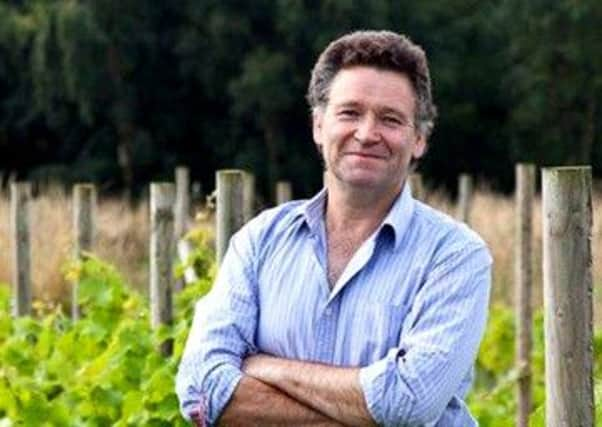Grape expectations: Fife vineyard to produce wine


An unremarkable slope overlooking the Firth of Forth may seem a most unlikely spot to grow grapes for wine, but an entrepreneurial chef and food writer is doing just that.
While more than 1,600 acres of vineyards in Bordeaux have been severely damaged in hail storms and two months of parched conditions are due to be followed by severe weather in Languedoc-Roussillon, Christopher Trotter is quietly confident his Fife crop will ripen in time for a September harvest.
Advertisement
Hide AdAdvertisement
Hide AdTrotter, who trained at the Savoy Hotel in London, was inspired to plant his vines three years ago after a farmer friend suggested global warming would give Fife the climate of the Loire Valley within two decades.
And it looks like he might be on to something, sooner than he envisaged. Last July, Fife was basking in average temperatures of more than 21C. And this year has already brought Scotland’s warmest spring and forecasters are predicting 2014 to be the second-hottest year since records began in 1910.
“The weather is phenomenal,” said Trotter, who is based in Upper Largo. “The vines are flowering now, which they haven’t done in the past, so that’s looking very, very positive. They only flower if they get to a certain temperature, and obviously they’ve achieved that, so it’s enormously exciting.
“They’re looking very healthy, so I’m quietly confident we’ll get a few grapes and make a small quantity of wine.”
But he admits his momentous first harvest will be a case of trial and error.
“I’m a complete novice when it comes to this because my vines have only been in the ground for three years, so we’ve never been in a position to produce any wine,” he said.
“The advice is that you plant the vines and allow them to grow for three years before you harvest them, and you trim them back to allow the roots to really strengthen.
“We’ve done that, so this year we hope will be the first in which we produce enough ripe grapes to make some wine.”
Advertisement
Hide AdAdvertisement
Hide AdHe also points out his first vintage of Chateau Largo is likely to be a very limited edition. “We’re only going to be harvesting off 200 vines and we just don’t know how many we’re going to get from that. But I’d be delighted if I made 20 bottles.”
He has planted three early-ripening grape varieties, Solaris, Siegerrebe and Rondo, to fit in with the short Scottish growing season. The vines were sourced from a Yorkshire winemaker, who imported them from Luxembourg.
If all goes to plan, he will be picking the fruits of his labour at around the same time as the nation goes to the polls to decide on independence.
He said: “We anticipate that September will be the time as we’ve chosen early-ripening varieties for the Scottish climate.”
SEE ALSO